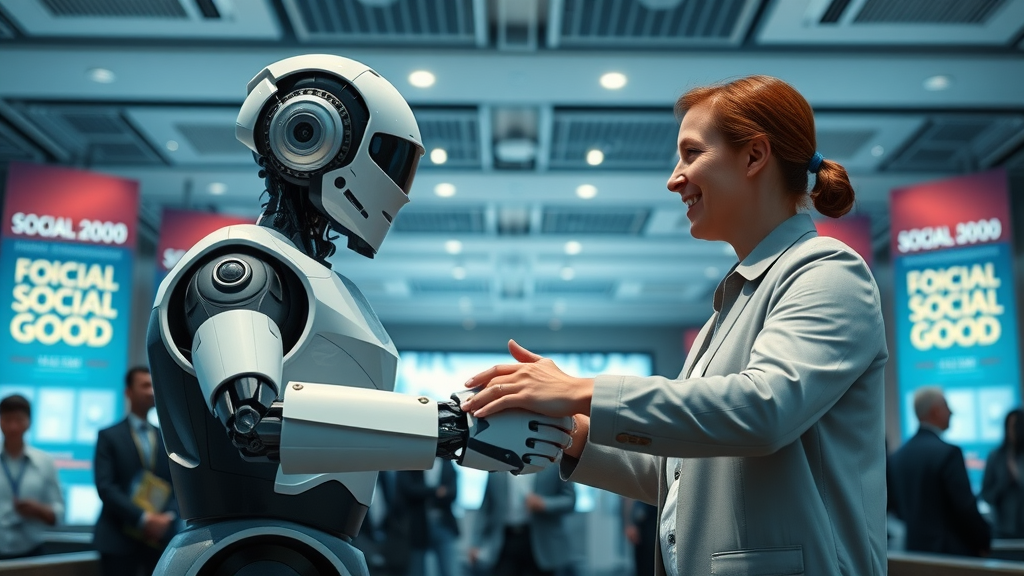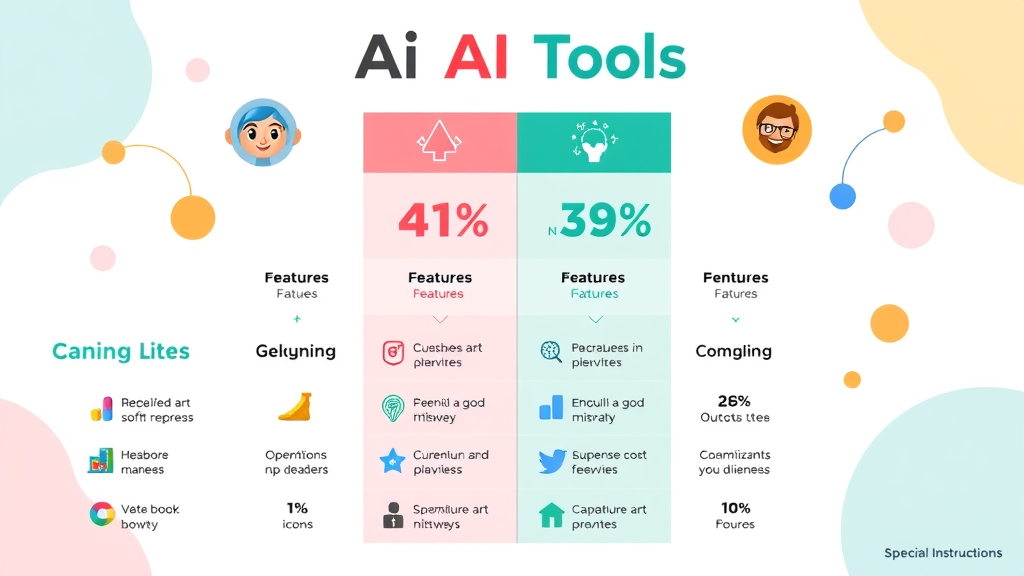Did you know that over 60% of nonprofits have already integrated AI technologies—reshaping the way missions are executed? As artificial intelligence sweeps through every industry, the nonprofit sector stands at a pivotal crossroads, where innovation meets deep social responsibility. AI isn’t just a new technology for efficiency—it’s rapidly becoming a catalyst for unprecedented progress in achieving social good. In this article, you’ll discover exactly how the impact of AI on nonprofits is transforming the sector, unlocking new opportunities, raising challenges, and setting the course for the future of mission-driven work.

Opening Insights: Why the Impact of AI on Nonprofits Is Unprecedented
The impact of AI on nonprofits is far from a mere trend—it represents a foundational shift in how nonprofit organizations operate, deliver services, and engage communities. Unlike any other technological innovation before, AI for nonprofits intersects with every facet of their mission, from day-to-day administrative tasks to large-scale program strategies. This rapid adoption is not only about leveraging advanced AI tools for organizational efficiency, but also about reshaping the core approach to social good. Nonprofit sector leaders are realizing that AI tools, like machine learning and generative AI, can automate labor-intensive workflows, analyze data for better decision making, and even personalize outreach to potential donors on a massive scale.
"Over 60% of nonprofits have already integrated AI technologies—reshaping the way missions are executed."
As we dive deeper, we’ll explore not just the benefits, but also the critical considerations required to adopt AI responsibly. Understanding these shifts helps board members, staff members, and supporters not only navigate challenges but also champion the evolution of the nonprofit sector for lasting social impact.
What You'll Learn About the Impact of AI on Nonprofits
- Understand the core benefits and challenges of AI in nonprofits
- Identify top AI tools and real-world applications for nonprofit organizations
- Learn about AI governance, data privacy, and responsible implementation
- Explore case studies demonstrating the social good achieved through AI
Overview: The Nonprofit Sector Embracing AI for Social Good

Nonprofit organizations exist at the intersection of compassion and innovation, and in the digital era, embracing AI for social good is quickly becoming a defining trait for success. Unlike their private sector counterparts, nonprofits must balance mission-driven objectives with limited resources and heightened scrutiny regarding ethics and transparency. With the integration of nonprofit AI solutions, NGOs and charities now have the tools to not only boost efficiency but also enhance their impact on societal issues such as human rights, healthcare, education, and the environment. Adopting advanced AI frameworks enables these organizations to reach more people, allocate resources thoughtfully, and transparently demonstrate their results.
Across the globe, AI for nonprofits is helping these vital organizations make sense of complex data, automate routine processes, and deliver services with greater precision. From AI-powered donor management to predictive analytics for fundraising and personalized communication on social media, the nonprofit sector’s embrace of AI represents a bold leap into a future where technology and social good work hand in hand, amplifying impact where it matters most.
How Artificial Intelligence Is Shaping the Nonprofit Sector
Artificial intelligence is fundamentally changing how nonprofits identify opportunities, maximize resources, and achieve long-term sustainability. By integrating AI tools, nonprofit organizations can automate everything from administrative workflows to program management—freeing up staff members to spend more time on strategic initiatives and direct service delivery. For example, AI algorithms help sift through massive datasets, identifying trends that were previously buried and making the process of analyzing data both faster and more insightful. This empowers nonprofits to make informed decisions about where to allocate funds, which programs need improvement, and how best to engage with supporters.
Moreover, machine learning and generative AI are making it easier for organizations in the nonprofit sector to personalize their outreach and communication strategies. AI-powered chatbots can answer questions from potential donors, while machine learning segments large supporter lists to ensure more effective and relevant content is delivered. As nonprofits continue to leverage AI, the sector as a whole is witnessing a new era of data-driven, mission-focused innovation that promises to expand and multiply the delivery of social good.
Generative AI and Its Potential for Social Impact
Generative AI is emerging as a game changer in the nonprofit landscape, going beyond simple automation to actually create meaningful content, generate reports, and develop insights that directly inform strategic planning. By using generative AI, nonprofits can rapidly develop customized grant proposals, impact reports, and fundraising materials—allowing them to adapt quickly to changing circumstances and new opportunities. This technology also empowers organizations to visualize the outcomes of programs in compelling ways, helping both staff and board members better make sense of the organization’s achievements and future goals.
Just as crucially, generative AI can help nonprofits translate complex data into digestible stories for donors and beneficiaries, widening the circle of support for social good. The ability to generate text, images, or even video on-demand means smaller organizations can amplify their voice even on tight budgets. However, with great power comes the need for responsible AI governance—ensuring all generated content supports truth, transparency, and the nonprofit’s larger mission.
The Impact of AI on Nonprofits: Key Benefits and Opportunities
The benefits of AI are already reshaping the nonprofit sector, with organizations experiencing transformative improvements across operations, communications, and outcomes. AI for nonprofits includes tools and solutions specifically designed to address the unique challenges of mission-driven organizations. With the right AI tools and strategies, nonprofits serve more people, respond to community needs more efficiently, and maximize every dollar for social impact. Yet, with all these opportunities, it’s vital to focus on responsibility, data privacy, and ethical governance to ensure technology is an empowering force for good, not a barrier.
Let’s break down the most important opportunities arising from the impact of AI on nonprofits today—touching on operational efficiency, better data analysis, fundraising, and improved donor engagement.
Operational Efficiency: How AI Tools Power Nonprofit Organizations
- Automating administrative workflows using AI tools
- Enhancing donor management with machine learning
- Improving outreach via AI-powered social media strategies
AI for nonprofits delivers operational efficiency that’s truly transformative. The automation of administrative tasks—such as data entry, volunteer scheduling, and email communications—ensures nonprofit staff and board members can spend more time focusing on the initiatives that matter. With machine learning, nonprofits optimize donor management by analyzing giving patterns, identifying potential donors, and personalizing outreach at scale. These solutions not only streamline processes, but also drive smarter, more informed decision-making, which is vital for resource-constrained organizations.
Social media, too, receives a major lift with AI-powered strategies: tools that tailor messaging to reach the right people at the right time, amplify campaign reach, and measure impact in real-time. Through this lens, the impact of AI on nonprofits becomes clear—the right AI tools can stretch limited budgets, extend organizational reach, and fuel the delivery of social good.
AI for Nonprofits: Improving Data Analysis and Program Effectiveness

In today’s data-driven world, nonprofits can no longer afford to rely on intuition alone. AI for nonprofits brings advanced data analysis to the forefront, enabling organizations to pinpoint what works, what doesn’t, and how to adjust programs for the greatest possible impact. Through AI-powered data visualization platforms and predictive analytics, nonprofits extract actionable insights from vast datasets without specialized technical teams. This allows leadership to make informed decisions about programming, resource allocation, and stakeholder engagement—maximizing the benefits of AI for long-term social good.
Moreover, AI-driven tools facilitate real-time performance monitoring and impact reporting. With the ability to automate and enhance these traditionally time-consuming processes, staff members gain more time for direct mission work. This data-centric approach positions nonprofits to demonstrate transparency, prove effectiveness, and scale what works—all essential in building trust and attracting ongoing support from funders, donors, and communities served.
Challenges and Considerations in the Impact of AI on Nonprofits
Despite the transformative power of AI, the journey is not without its obstacles—particularly for mission-driven organizations accountable to their stakeholders and the broader public. Key challenges include data privacy, ethical AI governance, and the persistent resource constraints typical of the nonprofit sector. Every board member must recognize that adopting AI is more than a technical decision: it’s a commitment to responsible innovation and the protection of human rights, privacy, and dignity in every community touched by the organization’s work.
Between budgeting for the right AI tool, establishing data privacy protocols, and building a culture of ethical AI use, nonprofit leaders need a clear, strategic approach for every step of this technological journey.
Data Privacy and Security: Safeguarding Sensitive Nonprofit Data
For nonprofit organizations handling personal, donor, and beneficiary data, data privacy is paramount. AI tools necessitate robust security protocols to ensure sensitive information stays protected from breaches and unauthorized access. Adopting comprehensive AI frameworks that prioritize encryption, access controls, and regular audits is essential to maintain trust and comply with privacy regulations. Nonprofits must evaluate every AI solution from the perspective of data security, particularly as cyber threats and privacy expectations evolve.
Implementing responsible AI for nonprofits also means educating staff members on best practices and potential risks in handling digital information. As the sector continues to innovate, organizations must bake data privacy into the DNA of all operations—not just as a compliance requirement, but as a core aspect of mission-driven work for social good.
AI Governance: Ensuring Ethical and Transparent AI for Nonprofits
The use of AI in the nonprofit sector introduces complex questions about fairness, accountability, and bias. Establishing strong AI governance is critical—not just for legal compliance, but for sustaining public trust and demonstrating ethical stewardship. Nonprofits are expected to explain how AI frameworks inform decision-making, ensure algorithms are unbiased, and provide clear accountability measures for both successes and failures.
Robust governance structures involve diverse teams—including board members, staff, and sometimes beneficiaries—to review AI-driven processes, assess impacts, and refine ethics policies. The ultimate goal of AI governance is to guarantee that every deployment of AI aligns with the organization’s values and commitment to social good, setting a strong example within the broader community.
Resource Constraints: Budgeting for Artificial Intelligence in Nonprofits

Budgeting for AI is one of the most significant hurdles nonprofit organizations face. Limited financial resources can make AI adoption seem out of reach, especially compared to well-funded corporations. Yet, impactful AI tools are becoming increasingly accessible, with free or discounted platforms designed specifically for the nonprofit sector. It’s crucial for organizations to conduct a thorough cost-benefit analysis, weighing the immediate needs for operational efficiency against the longer-term benefits for organizational sustainability and social impact.
Allocating resources to training, support, and ongoing maintenance is equally important—ensuring that the investment in AI fosters lasting organizational change. A thoughtful, phased approach to implementing AI allows nonprofits to build capacity, address concerns, and demonstrate tangible progress on their mission, even in the face of tight budgets.
Best Practices for Implementing AI Tools in the Nonprofit Sector
- Conducting a needs assessment before adopting AI tools
- Training staff to effectively utilize AI for nonprofits
- Evaluating and selecting generative AI solutions responsibly
Implementing AI for nonprofits requires careful planning and organizational buy-in. Start by evaluating the unique needs and goals of your organization: What pressing challenges could an AI tool address? Which workflows or programs are most ripe for automation or analysis? Involve diverse stakeholders—board members, leadership, staff—to ensure all perspectives guide an AI strategy grounded in real-world priorities.
Next, invest in comprehensive staff training. Empowering every staff member with basic AI literacy turns potential resistance into enthusiasm, allowing the organization to spend more time delivering on its mission. Finally, use a responsible selection process—prioritizing transparency, effectiveness, and alignment with your values when choosing between AI solutions. Organizations that follow these best practices position themselves to unlock the full impact of AI on nonprofits, balancing innovation with ethical stewardship.
Spotlight: Generative AI and Other AI Tools for Nonprofits
| AI Tool | Key Features | Approximate Cost | Pros | Cons |
|---|---|---|---|---|
| ChatGPT | Content generation, chatbots, report writing | Free/$20 per month (pro) | Flexible, easy to use, high-quality outputs | Not tailored for nonprofit specifics, privacy considerations |
| Salesforce Nonprofit Cloud + AI | Donor management, program analytics, automated insights | From $36/user/month | Enterprise-grade, end-to-end solution, donor insights | Higher learning curve, investment needed |
| Grammarly for Nonprofits | AI-enhanced writing, communication clarity | Discounted for nonprofits | Improves impact reporting, clear communication | Limited to writing assistance |
| Hootsuite + AI | Social media scheduling & AI-powered strategy | Discounted for nonprofits | Streamlines outreach, increases engagement | Setup can be complex |
| Kintone + AI Plugins | Automated workflows, database management | Discounted for nonprofits | Highly customizable, integration-friendly | Requires technical capacity |

From generative AI copywriting for grant proposals, to automated donor engagement and program analytics, nonprofit organizations have access to a growing suite of transformative AI-driven solutions. Choosing the right AI tool involves weighing features, costs, and long-term compatibility with your organization's mission and values. Many providers offer nonprofit discounts, making adoption more accessible than ever for charities large and small. Leveraging these tools effectively transforms how nonprofits deliver on their promise of social good.
Case Studies: How Nonprofit AI Drives Social Good
AI in Fundraising: Transforming Donor Engagement with Artificial Intelligence
Imagine a world where every donor receives the right message at exactly the right moment. That’s the reality for nonprofits leveraging AI-powered CRM and donor analytics. One major international charity adopted machine learning to analyze donor habits, segment supporters, and automate follow-ups—leading to a 40% increase in donor retention over one year. These AI solutions don’t just save time; they make sense of complicated giving histories and predict which donors might be ready for a new level of engagement, maximizing resources for greater social impact.
In another example, a local food bank implemented chatbots to answer donor questions instantly and guide supporters to personalized donation pages. The result was a 60% boost in year-end giving campaigns and much more meaningful engagement from new and existing stakeholders—all thanks to AI for nonprofits enhancing the donor journey.
Generative AI for Program Management and Impact Reporting
Nonprofits are increasingly using generative AI to reduce administrative burdens and strengthen accountability. An education nonprofit, for instance, automated its quarterly impact reports using generative AI content tools—freeing up over 200 hours a year for teachers and staff while ensuring each report aligned with funder requirements. This not only enhanced internal efficiency but also improved transparency for board members and potential donors, reinforcing trust in the organization’s mission.
Similarly, health-focused nonprofits now leverage AI-generated dashboards that analyze and visualize demographic data, ensuring underserved communities get the resources they need. The benefits of AI go beyond efficiency—they create new opportunities to spend more time creating real-world social good, rather than compiling statistics manually.
Addressing People Also Ask: Key Questions on the Impact of AI on Nonprofits
How does the impact of AI on nonprofits differ from its use in the private sector?
Answer: AI in nonprofits prioritizes mission-driven outcomes and social good, often with more limited resources and a greater emphasis on transparency and ethical governance compared to private sector applications.
What are some challenges nonprofits face when adopting artificial intelligence?
Answer: Common challenges include budget limitations, staff training, data privacy, and ensuring AI governance aligns with the mission and values of the nonprofit.
FAQs: The Impact of AI on Nonprofits
-
Which AI tools are most beneficial for nonprofit organizations?
Leading AI tools for nonprofits include content generators (like ChatGPT), donor analytics platforms, and AI-enhanced CRM systems tailored to nonprofit workflows. These tools increase efficiency, drive better decision-making, and help organizations personalize engagement with supporters. -
How can machine learning improve nonprofit outcomes?
Machine learning helps nonprofit organizations by analyzing large datasets to identify trends, optimize program delivery, and predict emerging community needs. This technology increases the precision and effectiveness of services, ensuring resources are used for maximum social impact. -
What are best practices for AI governance in nonprofits?
Best practices include building a governance team, ensuring transparency in AI decision-making, regularly auditing algorithms for potential bias, and keeping all stakeholders—board members, staff, and beneficiaries—informed and involved in policy creation and evaluation. -
How does AI enhance social media strategies for the nonprofit sector?
AI-powered social media tools automate content publishing, optimize posting times, and analyze engagement patterns to reach the right audiences. They also help craft personalized messages that convert casual followers into passionate supporters, making outreach far more effective. -
What are the risks and rewards of generative AI for nonprofits?
The rewards include dramatic time savings, customized communication, and better impact reporting. The risks involve ethical concerns, potential misuse of generated content, and privacy considerations—making responsible AI governance and transparency more important than ever.
Key Takeaways on the Impact of AI on Nonprofits
- AI for nonprofits offers immense opportunities for operational efficiency and program impact.
- Careful attention to data privacy and AI governance is essential.
- A strategic approach ensures ethically driven, social good outcomes.
Conclusion: The Future of AI for Nonprofits and the Path Forward
"AI isn’t just a tool for efficiency—it’s a catalyst for social change in the nonprofit sector."

The impact of AI on nonprofits is only beginning—from increasing operational speed to fueling bold new interventions for social good. Moving forward, organizations that center ethical, transparent, and mission-aligned AI adoption will shape the future of the sector and deliver on their promise of a better world.
Ready to Maximize the Impact of AI on Nonprofits?
Call me the Chaplain 786-333-5270
Artificial intelligence (AI) is revolutionizing the nonprofit sector by enhancing operational efficiency, personalizing donor engagement, and improving program effectiveness. For instance, AI-driven tools can automate routine tasks, allowing staff to focus on strategic initiatives. Additionally, AI enables personalized communication with donors, leading to increased engagement and support. To explore these transformations further, consider reading the article “How AI is transforming nonprofit organizations,” which delves into various AI applications in the nonprofit sector. Another insightful resource is “Changing The World One Algorithm At A Time With AI In Non-Profits,” offering a comprehensive overview of AI’s impact on nonprofit operations. If you’re serious about leveraging AI to enhance your nonprofit’s impact, these resources will provide valuable insights and practical guidance.
 Add Row
Add Row  Add
Add 




Write A Comment